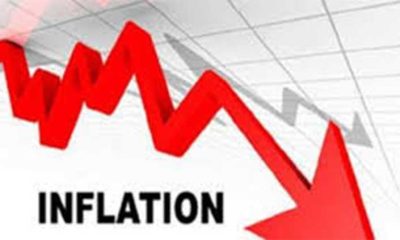US job growth accelerated sharply in January while the unemployment rate hit more than a 53-1/2-year low of 3.4%, pointing to a stubbornly tight labor market, and a potential headache for Federal Reserve officials as they fight inflation.
The Labor Department’s closely watched employment report on Friday also showed job creation in the past year was much stronger than previously estimated, suggesting the economy was nowhere near a recession. Though wage inflation cooled further in January, average hourly earnings increased faster in 2022 than previously estimated.
The strength in hiring, which occurred despite layoffs in the technology sector as well as in sectors like housing and finance that are sensitive to interest rates, poured cold water on market expectations that the US central bank was close to pausing its monetary policy tightening cycle.
Economists said the head-scratching report and other data on Friday showing a sharp rebound in services industry activity last month suggested the Fed could lift its target interest rate above the recently projected 5.1% peak and keep it there for some time.
“The labor market is still running hot, too hot for the Fed’s liking,” said Daniel Vernazza, chief international economist at UniCredit Bank in London. “Anyone that thought the Fed might stop hiking as soon as its March meeting is likely to be disappointed on this evidence.”
The survey of establishments showed nonfarm payrolls surged by 517,000 jobs last month, the most in six months. Economists in a Reuters poll had expected a gain of 185,000. Data for December was revised higher to show 260,000 jobs added instead of the previously reported 223,000. Employment growth last month was well above the monthly average of 401,000 in 2022.
With January’s report, the Labor Department’s Bureau of Labor Statistics (BLS) published its annual payrolls “benchmark” revision and updated the formulas it uses to smooth the data for regular seasonal fluctuations in the establishment survey.
The economy added 568,000 more jobs in the 12 months through March 2022 than previously reported. Revisions to payrolls data from April through December also showed more jobs created than previously estimated. The economy added 4.8 million jobs in 2022 instead of the 4.5 million previously reported.
The revisions dispelled claims by researchers at the Philadelphia Fed who published a paper in December suggesting employment growth in the second quarter of 2022 was overstated by about a million jobs.
The BLS revised its industry classification system, which resulted in about 10% of employment reclassified into different industries. Last month’s broad increase in employment was led by the leisure and hospitality sector, which added 128,000 jobs, with 99,000 of them in restaurants and bars.
Leisure and hospitality employment remains 495,000 jobs below its pre-pandemic level. Professional and business services employment rose by 82,000, with temporary help jobs, a harbinger for future hiring, rebounding by 25,900 after declining for several months. Government payrolls jumped 74,000, boosted by the return of striking university workers in California.
Construction payrolls increased by 25,000 jobs, which were mostly among specialty trade contractors. Manufacturing employment rose by 19,000 jobs.
WAGE GROWTH SLOWS
Average hourly earnings increased 0.3% last month after gaining 0.4% in December. That lowered the year-on-year increase in wages to 4.4%, the smallest rise since August 2021, from 4.8% in December. But wage growth was revised up for 2022, suggesting only a moderate pace of cooling in wage inflation than previously thought. The average workweek increased to 34.7 hours from 34.4 hours in December.
“While it is natural to be skeptical of the degree of strength in payroll growth and the increase in total hours worked given the perceived slowing of growth, we have been pointing out that almost all the labor market indicators going into this report showed an improvement in labor market conditions,” said Conrad DeQuadros, senior economic advisor at Brean Capital in New York.
President Joe Biden said the employment report was a sign that his economic plan was working. “Jobs are going up, inflation is going down,” the Democratic president wrote on Twitter.
The Fed on Wednesday raised its policy rate by 25 basis points to the 4.50%-4.75% range, and promised “ongoing increases” in borrowing costs. Government data this week showed there were 11 million job openings at the end of December, with 1.9 openings for every unemployed person.
The BLS also incorporated new population estimates in the household survey, from which the unemployment rate is derived. As such, the unemployment rate of 3.4%, the lowest since May 1969, is not comparable to December’s 3.5% rate, though it was not impacted by the new population controls.
Household employment jumped 894,000, but accounting for the new population estimates, the increase was only 84,000. About 886,000 people entered the labor force, though the number declined by 5,000 after adjusting for the population controls.
The labor force participation rate, or the proportion of working-age Americans who have a job or are looking for one, rose to 62.4% in January from 62.3% in December. It was unchanged after taking the new population estimates into account.
The employment report hinted at a rebound in manufacturing production last month. There are also signs that retail sales got off to a strong start in 2023. The economy continued to show resilience despite 450 basis points of rate hikes since last March.
“The Fed would be well-served to consider this as a success and think that slowing down the pace of hikes, would allow the job market to bend, but maybe not break,” said Rick Rieder, chief investment officer of global fixed income at BlackRock in New York.
“Today presents good evidence of a job market not breaking and evidence of how the economy can adapt and adjust to remain vibrant in the face of major headwinds.”
Post Views: 68


 Sports3 months ago
Sports3 months ago
 Sports3 months ago
Sports3 months ago
 Fashion2 months ago
Fashion2 months ago
 pakistan3 months ago
pakistan3 months ago
 pakistan3 months ago
pakistan3 months ago
 World2 months ago
World2 months ago
 World2 months ago
World2 months ago
 Sports2 months ago
Sports2 months ago



















